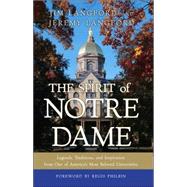
JIM LANGFORD has been an editor at Doubleday and the University of Michigan Press, and was director of the University of Notre Dame Press from 1974–1999. Author of eight books and a member of the Notre Dame faculty, he has received the Kaneb Teaching Award and is a frequent speaker in the nationwide Hesburgh Lecture Series.
JEREMY LANGFORD is executive editor of religious studies for Rowman & Littlefield and its Catholic imprint, Sheed & Ward. An award-winning author and coeditor of Doubleday’s The Journey to Peace, he grew up in the shadow of the Dome and graduated from Notre Dame in 1992. He lives with his wife and son in Evanston, Illinois.
The New copy of this book will include any supplemental materials advertised. Please check the title of the book to determine if it should include any access cards, study guides, lab manuals, CDs, etc.
The Used, Rental and eBook copies of this book are not guaranteed to include any supplemental materials. Typically, only the book itself is included. This is true even if the title states it includes any access cards, study guides, lab manuals, CDs, etc.
Excerpted from The Spirit of Notre Dame: Legends, Traditions, and Inspiration from One of America#s Most Beloved Universities by Jim Langford, Jeremy Langford
All rights reserved by the original copyright owners. Excerpts are provided for display purposes only and may not be reproduced, reprinted or distributed without the written permission of the publisher.